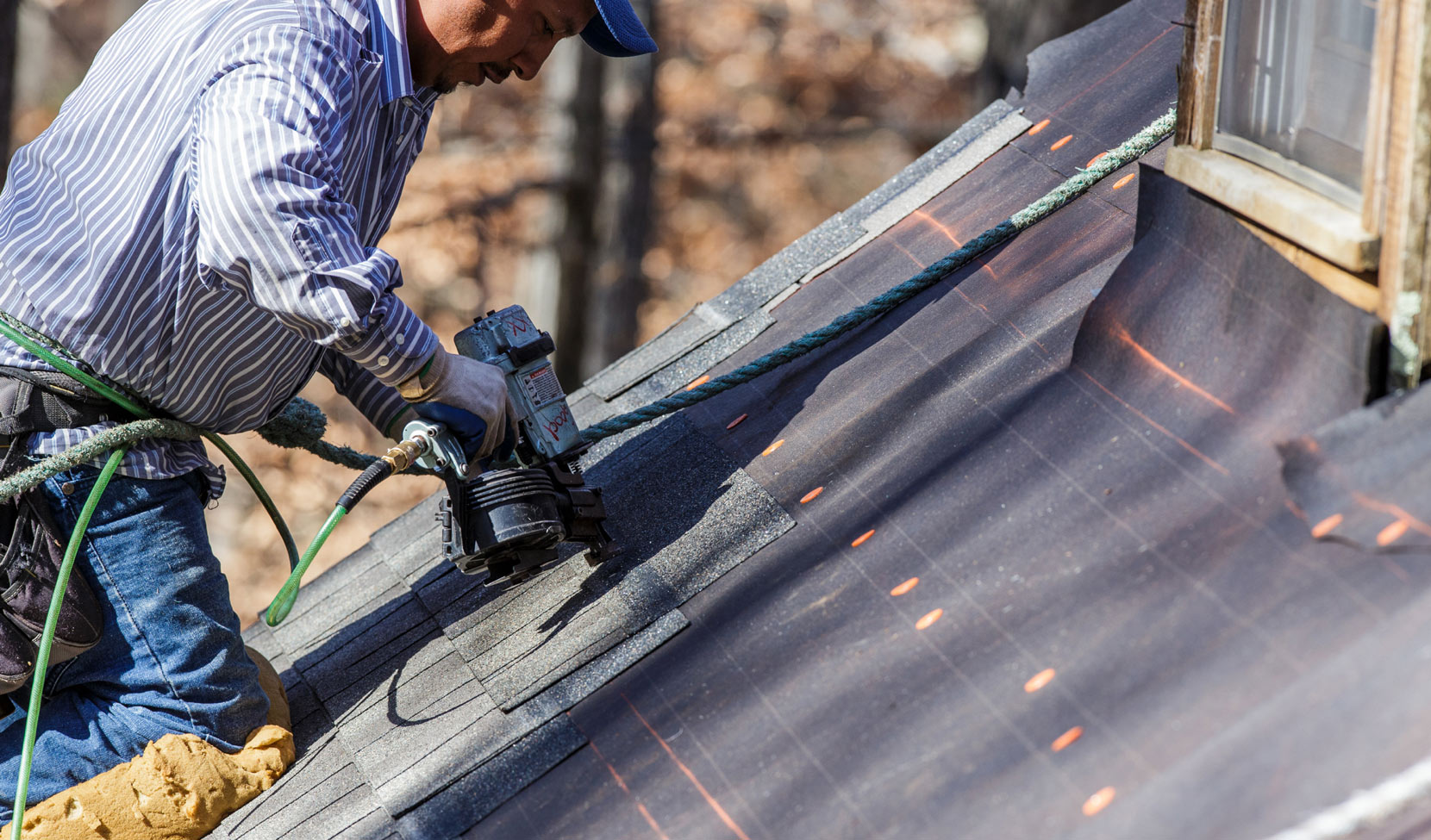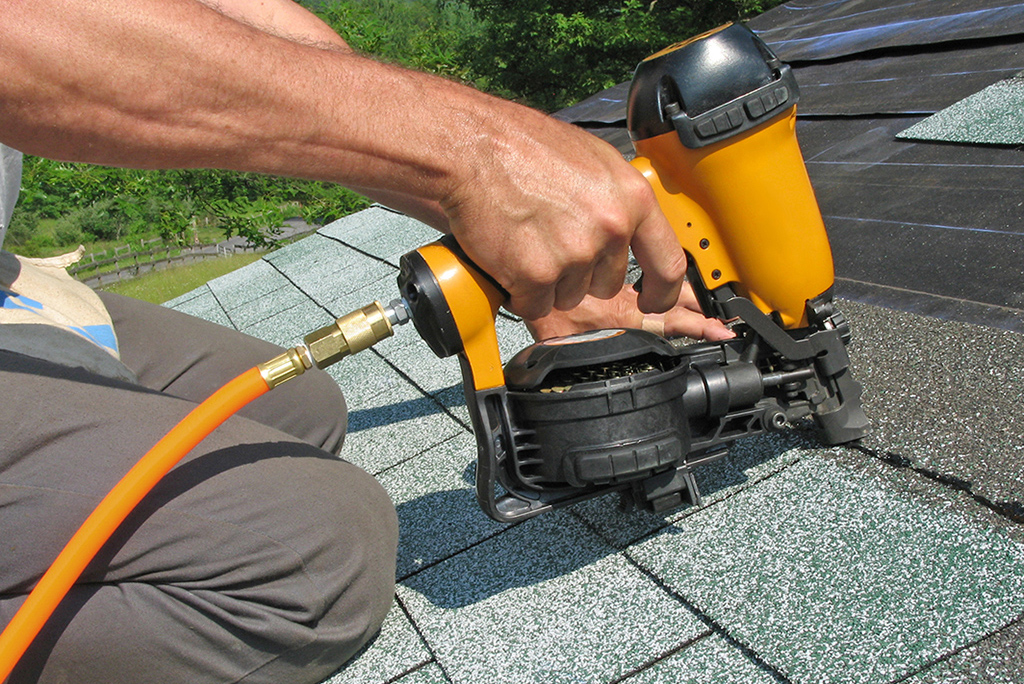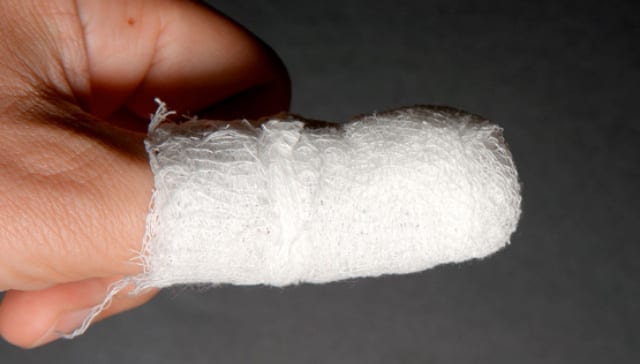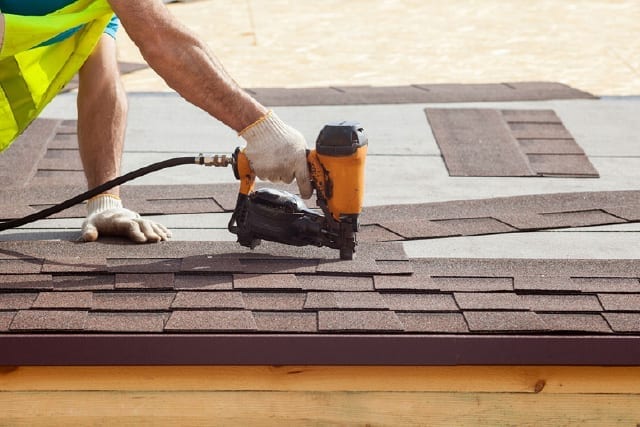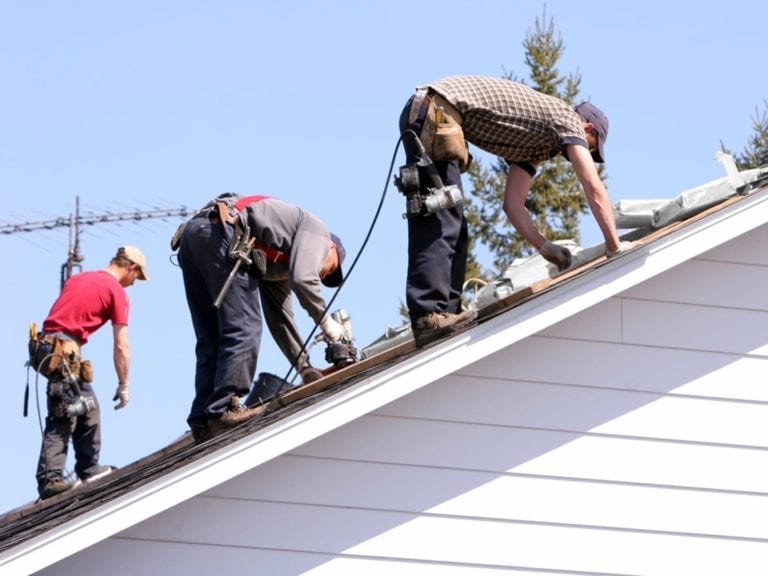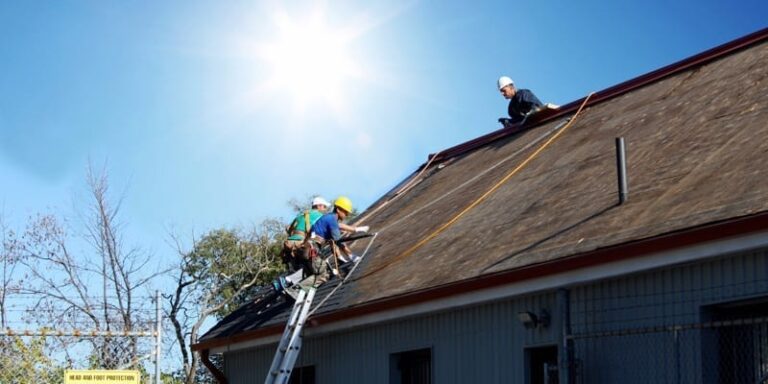A Roofer’s Guide To Nail Gun Safety
Top Nail Gun Safety Tips for Roofers
Table of Contents:
- The advantages of using a roofing nail gun
- What’s at risk?
- Different types of nail gun power sources
- Top nail gun safety tips
- How injuries happen
- In review: Quick list of nail gun safety tips
- Keep safe and your work will show the results
As a residential roofer, one of your top tools will be a roofing nail gun (often called a “roofing nailer”). It will help you fasten shingles or other roofing materials, such as underlayments, quickly and efficiently.
Although there are other types of nail guns available – such as siding nail guns – manufacturers have developed specific nail guns for roofers – these use roofing nails and are designed to install the nail tight to the shingle.
The advantages of using a roofing nail gun
Roofing nail guns are widely celebrated for making shingle installation more efficient – roofers find nail guns help them install shingles faster and feel less tired afterward, versus manually pounding in each nail.
However, as with all power tools, nail guns bring with them important safety considerations users must keep in mind at all times. Thanks to their fast application, nail guns boost productivity in a wide variety of contracting jobs; however, nail guns also cause tens of thousands of painful injuries each year, according to the Occupational Safety and Health Administration (OSHA). In Canada, some experts estimate up to 30% of workers have experienced an injury at the hands of a nail gun.
By becoming familiar with common nail gun safety rules, you’ll be able to complete your work confidently and easily – all while knowing you’re reducing your chance of injury.
What’s at risk?
More then half of nail gun injuries happen to the hands and fingers, and can cause damage to the tendons, joints, nerves, and bones. The next more common type of nail gun injury is to the leg, knee, thigh, foot, and toes. Less common, but still reported, are injuries to the forearm or wrist, head and neck, and trunk – all of which can lead to painful or long-term damage to your body. (Source: OSHA.)
Different types of nail gun power sources
There are three general types of power sources for nail guns: pneumatic, fuel powered and battery powered, each with different advantages and drawbacks.
Pneumatic nail guns
Pneumatic nail guns are hooked up to air compressors to allow for forceful insertion of the nail into the working material. Pneumatic nail guns allow plenty of power, but take a few seconds to build up pressure, unlike fuel powered or battery powered nail guns.
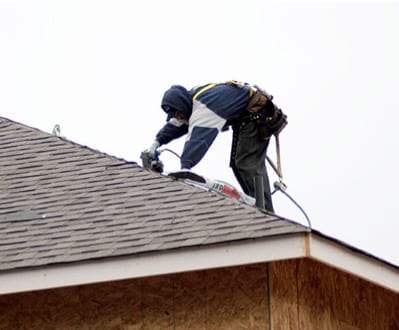
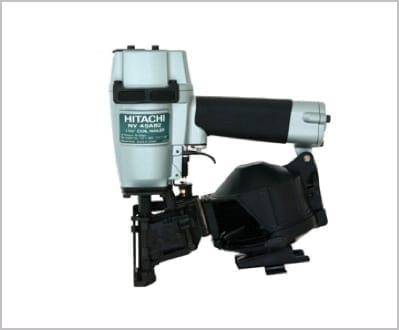
When choosing this type of tool, ensure the air compressor you buy along with it is compatible with your nail gun (manufacturer guidelines will specify which compressor to look for).
There is a considerable price advantage with these nail guns: they can run as little as half the cost of a cordless version.
A note about air compressor safety – Any pneumatic power tools that use compressed air, like nail guns, are regulated by OSHA. Familiarize yourself with their regulations for pneumatic power tools, which include requirements like: securing the hose, safety devices for the muzzle attachment, safe operating air pressure levels and proper hoisting techniques. Also, ensure your gun is unhooked from the air compressor when not in use to prevent accidental firing.
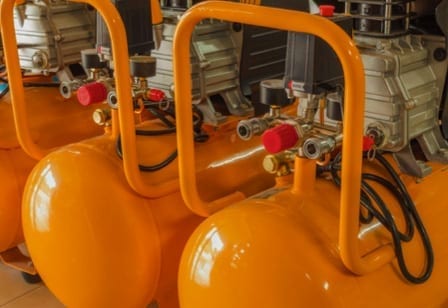
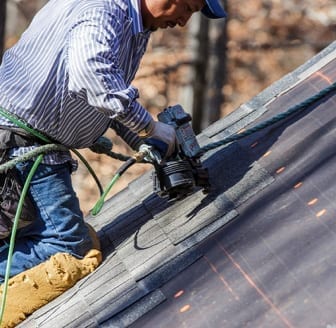
Fuel powered nail guns
These operate with an attachable fuel chamber that uses an electrical spark to ignite and burn the fuel (such as butane). They are fast and powerful but the cartridge must be changed regularly. These cost more than the traditional pneumatic nail gun.
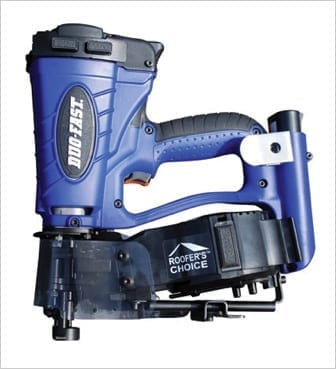
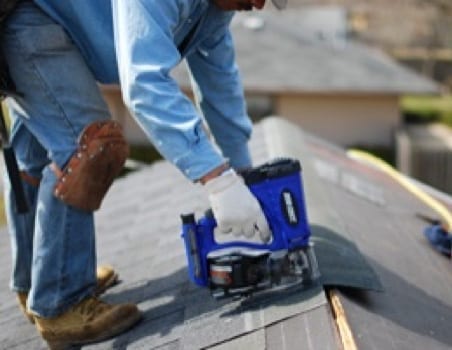
Battery powered nail guns
Although these don’t offer the same power as the first two types of nail gun power sources, battery-powered nail guns can be handy for getting into hard to reach places. With a rechargeable battery, you can cut down on the cost of using non-reusable fuel cartridges as you do with a fuel powered nail gun.
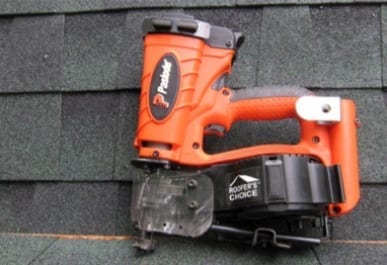
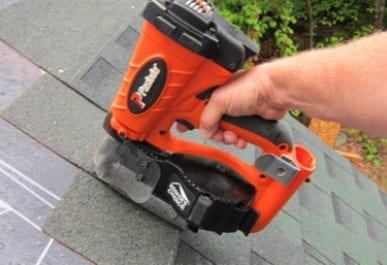
Like the fuel powered nail gun, battery powered nail guns remove the need to worry about an air compressor hose on the roof.
(Source: Tool for Home, WoodWorkers Guild of America.)
Top nail gun safety tips
OSHA offers these top six nail gun safety tips. We dig into each one below to make them easy to follow and part of your everyday routine.
Working each of these steps into your work on the job site will make it easier to stay safe and prevent injuries.
1. Use a full sequential trigger
An important part of nail gun safety is knowing your tool. And because there is so much variety in trigger options, each with different levels of safety protection, the trigger is an important piece to think about.
Nail guns generally have four types of triggers: full sequential triggers, contact triggers, single sequential triggers and single actuation triggers. These are categorized according to how the user discharges the nail and how many nails can be released in a row. Some nail gun models offer the ability to switch between two different trigger types in a single gun. (Source: OSHA.)
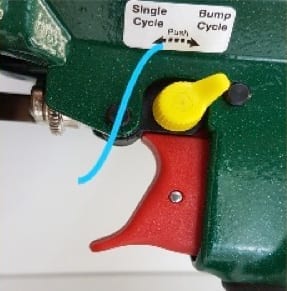
- Full Sequential (a.k.a. singleshot trigger, restrictive trigger, or trigger fire mode)
- For these to work, you must press the safety contact tip (or “nose”) into the shingle, lumber or other working material, and then squeeze the trigger.
- As the name implies, you must do both these steps, in that sequence, each time, to release a nail.
- This is widely recognized as the safest type of nail gun and OSHA recommends using this type to promote job site safety.
- According to the Infrastructure Health & Safety Association (IHSA), studies indicate that workers who use sequential triggers are half as likely to sustain injuries – without reducing productivity.
- Contact trigger (a.k.a. bump trigger, multi-shot trigger, successive trigger, dual-action, touch trip, contact trip, and bottom fire)
- Like the full sequential, this model requires you press down on the safety contact tip and squeeze the trigger; however, you can do these in whichever order you like, allowing for easier discharge of multiple nails in a row.
- If you continue to squeeze the trigger, you can press the tip down repeatedly to discharge a series of nails with each press (or contact).
- Because after the first discharge there is only one step, the likelihood of a misfire or accidental discharge is higher with this type of trigger.
- Single Sequential trigger
- For this type of nail gun trigger to work, you must press the safety contact tip into the shingle, lumber or other material and then fire the trigger. You can then move the gun and fire subsequent nails without having to press the safety tip down again.
- As above, the likelihood of accidentally firing nails with this type of trigger is higher than the two-step, full sequential trigger.
- Single Actuation trigger
- This is very similar to single sequential trigger but differs slightly because you can “bump trigger” the first nail.
Nail gun safety features
You’re twice as likely to injure yourself using a multi-shot trigger versus a full sequential trigger. With that type of statistic, it’s no wonder OSHA recommends using a full sequential trigger. Although it may seem like extra time or work, studies indicate the multi-shot trigger was about 10% faster for workers building a wooden structure; however, the skill of the person using the gun had more of an effect on productivity than the tool itself. Practice makes perfect and can make up for any speed gained from a less safe alternative!
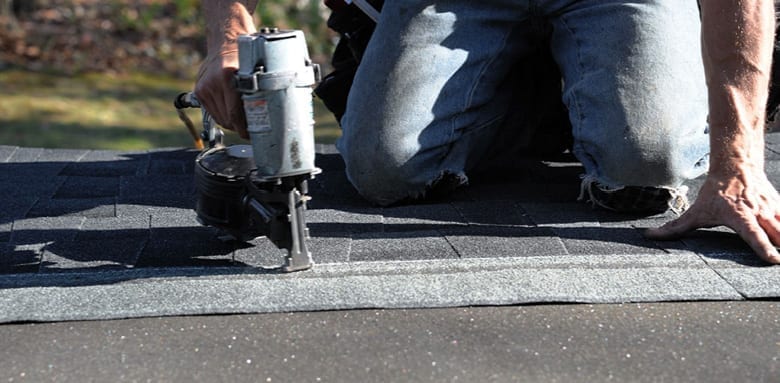
2. Provide/attend training
Nail gun safety training is a must for anyone using a nail gun on the worksite. If you’re an employer, offer your workers regular training. These classes or courses should cover a variety of topics, including:
- Different parts of the gun
- How triggers work
- How to understand (and where to find) the manual for each nail gun you use
- How to use your gun, including inspecting, loading, power sources and proper technique
- How to use an air compressor (if applicable)
- How to look for signs of a nailing surface that may cause a nail ricochet
- How to properly hold material when nailing
- How to work in awkward positions (such as on a ladder)
- What to do if a gun malfunctions
- How to use proper force to prevent misfires
The training should also include instructions on wearing personal protective equipment, how to administer or receive first aid in case of an accident and how to report incidents and near-misses. (Source: OSHA). Interestingly, as nail gun design continues to make these tools lighter and easier to use, they have also become more popular – which means they are more likely to be used by workers who are unfamiliar with them. This makes regular training for all users even more important.
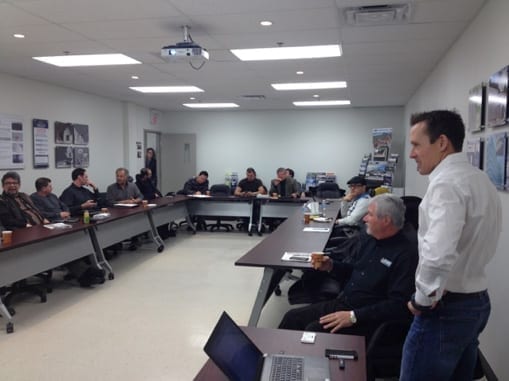
Where to find nail gun safety courses
Although many courses are available online, see if there is a live course available in your area. This will give you the opportunity to ask questions and interact with the nail gun while an instructor is present.
To find a suitable course, look for those certified by local or regional safety associations and be sure the material covers OSHA safety training requirements for nail guns and/or power tools, including the items listed above.
3. Establish nail gun work procedures
You should develop a series of written rules or guidelines for using nail guns on your worksite and you should ensure you and your coworkers follow them.
For example, some procedures might include
- Requiring that your nail gun manufacturer guidelines and instructions be readily available
- Checking every day that guns are functioning properly
- Requiring that malfunctioning guns be removed from the worksite
- Specifying nail gun safety rules and techniques, including aiming it away from your body and standing a safe distance away from the gun when using it (usually 12 inches or more).
- Ensuring your gun is unhooked from the air compressor when it’s not being used
Your procedure can even be as detailed as outlining how to clean and store your compressor after use.

Wear Protective Personal Equipment (PPE)
Make sure that the safety equipment you wear on site also promotes nail gun safety. For example, you should always wear:
– Steel toed boots. To provide added protection from potential foot or toe injuries.
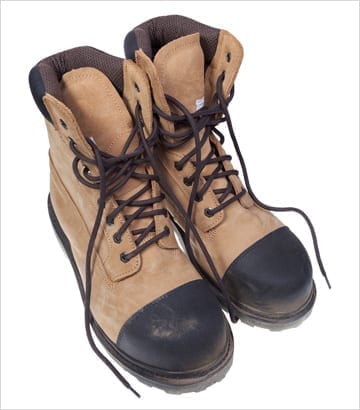
– Hard hats. For basic safety against work site hazards, including those posed by nail guns.
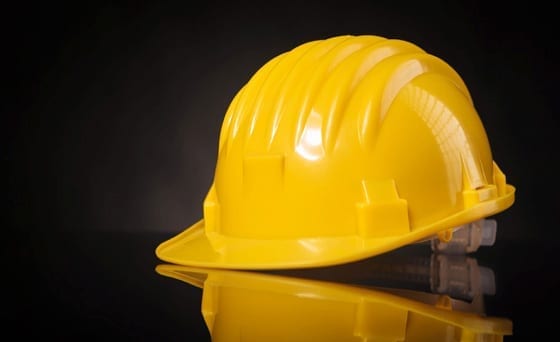
– Safety goggles. This will protect your eye from any projectiles – include a ricocheting nail. When researching safety goggles, search “safety glasses demonstration nail gun” on YouTube to see safety glasses manufacturer videos illustrating the power of their safety goggles against nail gun misfires.
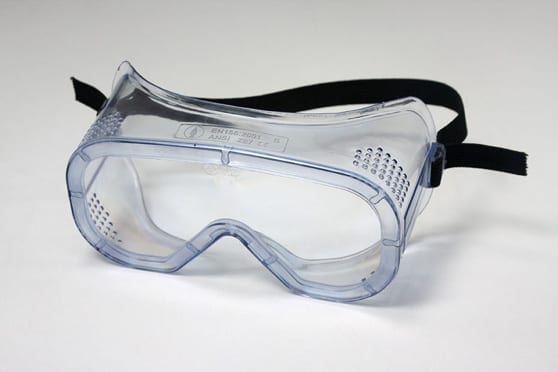
– Ear plugs or hearing protection. These help to protect against the potentially damaging level of noise from the air compressor and being close to the nail gun while it fires. (This is more of a concern with pneumatic nail guns, but is a good idea on any work site where you are working around heavy machinery or power tools.)
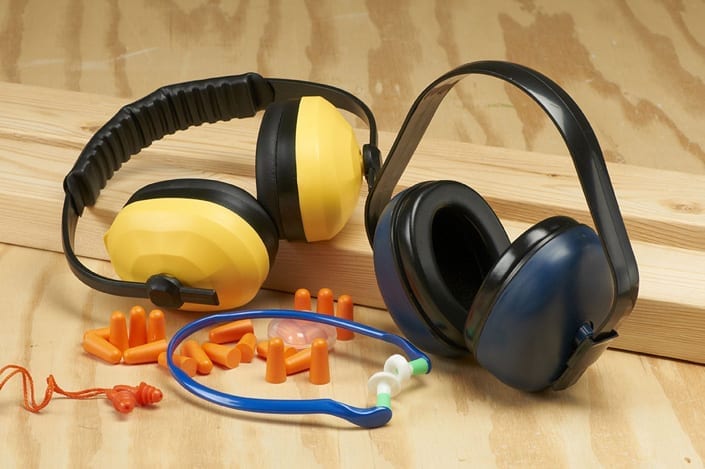
Record, report and talk about incidents and near misses
One of the best ways to prevent future injuries is to keep a record of accidents that have taken place. Having a written record of the scenarios that led to an injury or potential incident gives you an opportunity to learn from the past. As a contractor or roofing employer, be sure to encourage your co-workers and teammates to openly talk about incidents so you can compare notes and share helpful nail gun safety tips.
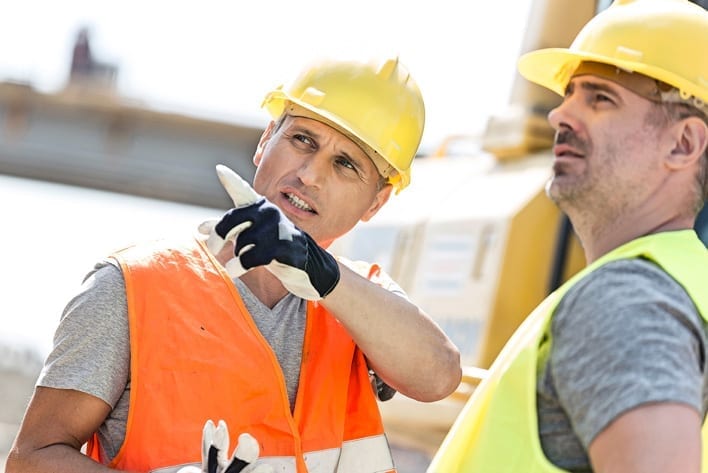
Know how to access first aid

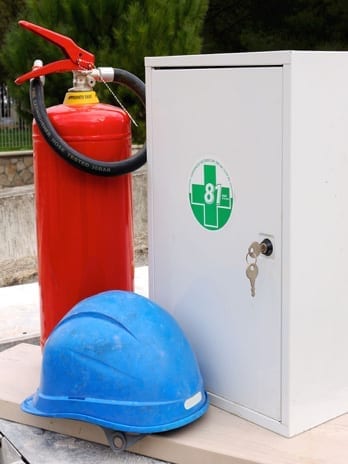
If an accident does happen with your nail gun, be sure to seek medical aid no matter how small the injury may seem – muscle or bone damage from the puncture wound is not uncommon with nail gun injuries. There is also threat of post-injury infection from cuts, scrapes or punctures.
Be sure you and any of your fellow works know how to access immediate treatment in the event an accident or injury does occur.
How injuries happen
OSHA has also compiled the top reasons nail gun injuries occur. These are the mishaps that nail gun safety rules seek to prevent.
Review the scenarios below to boost your awareness and consider how following basic nail gun safety rules can help reduce your risk.
- Accidental double fire
If you push too hard on a contact trigger nailer, or are nailing in an awkward spot, you can accidentally fire off two nails in a row. Because of the power of the tool, the second will often comes out too fast for you to react. - Accidental fire
If you have your trigger pulled on a single contact or actuation trigger and accidentally knock a person or material unintentionally this will discharge the nail, which can pose a danger to people and things around you. - Nailing through wood/materials
If your nail goes directly through the wood or material you are securing and comes out the other side, it can pose a risk to whatever is below – especially if you are holding the material in place with your hand. There is also a risk of a blow out, where the nail goes right through the material and ricochets off a hard piece of metal or other material underneath. - Nail ricochet
If you fire a nail and accidentally hit something hard, like a piece of metal you didn’t realize was hiding in the wood, the nail can bounce off and turn into a sharp projectile. - Missing the wood/material
Taking your time to fire your nail gun carefully and safely every time will help ensure your aim is true – so never move too fast when using a nail gun. - Modifying safety mechanisms
A roofer should never modify or jury-rig a nail gun to bypass the safety features by, for example, removing the spring in the safety contact tip. These features are installed for a reason – to keep the operator safe! Modifying can increase the chance that any of the above injury-causing accidents may happen. (Source: OSHA)
In review: Quick list of nail gun safety tips
Refer to this list for an easy refresher on properly – and safely – using your nail gun.
- Use a full sequential trigger
- Never modify safety features of a nail gun
- Read and understand all instructions and warnings related to your nail gun
- Ensure all bystanders are a safe distance away from you while you use your nail gun
- Keep the gun at least 12 inches away from your body when using it (but refer to specific manufacturer instructions for each nail gun)
- Point the tool away from your body when firing
- Remove your finger from the trigger when not using the nail gun
- Keep your hands, feet and other body parts away from the line of fire when discharging a nail
- Never point the nail gun at anyone – even if your finger is off the trigger
- Disconnect the nail gun before performing any maintenance work on it
- Always wear personal protective equipment
- Never fire a nail gun unless the nose is pressed squarely against the material
(Source: OHS Online, Nail Gun Center, Ask the Builder, Texas Department of Insurance.)
Keep safe and your work will show the results
OSHA and other nail gun safety suggestions have been compiled based on statistics and real-life stories of worker injuries. By following these nail gun rules and suggestions, you can reduce your risk while still making the most of this handy instrument. This will give you a leg up in the industry, and put a powerful tool in your arsenal to continue creating beautiful, lasting roofs for your clients.
The information and safety tips contained in this article are intended as general information only, and are not a substitute for proper live training and compliance with all local occupational health and safety rules, regulations, guidelines and recommendations.

